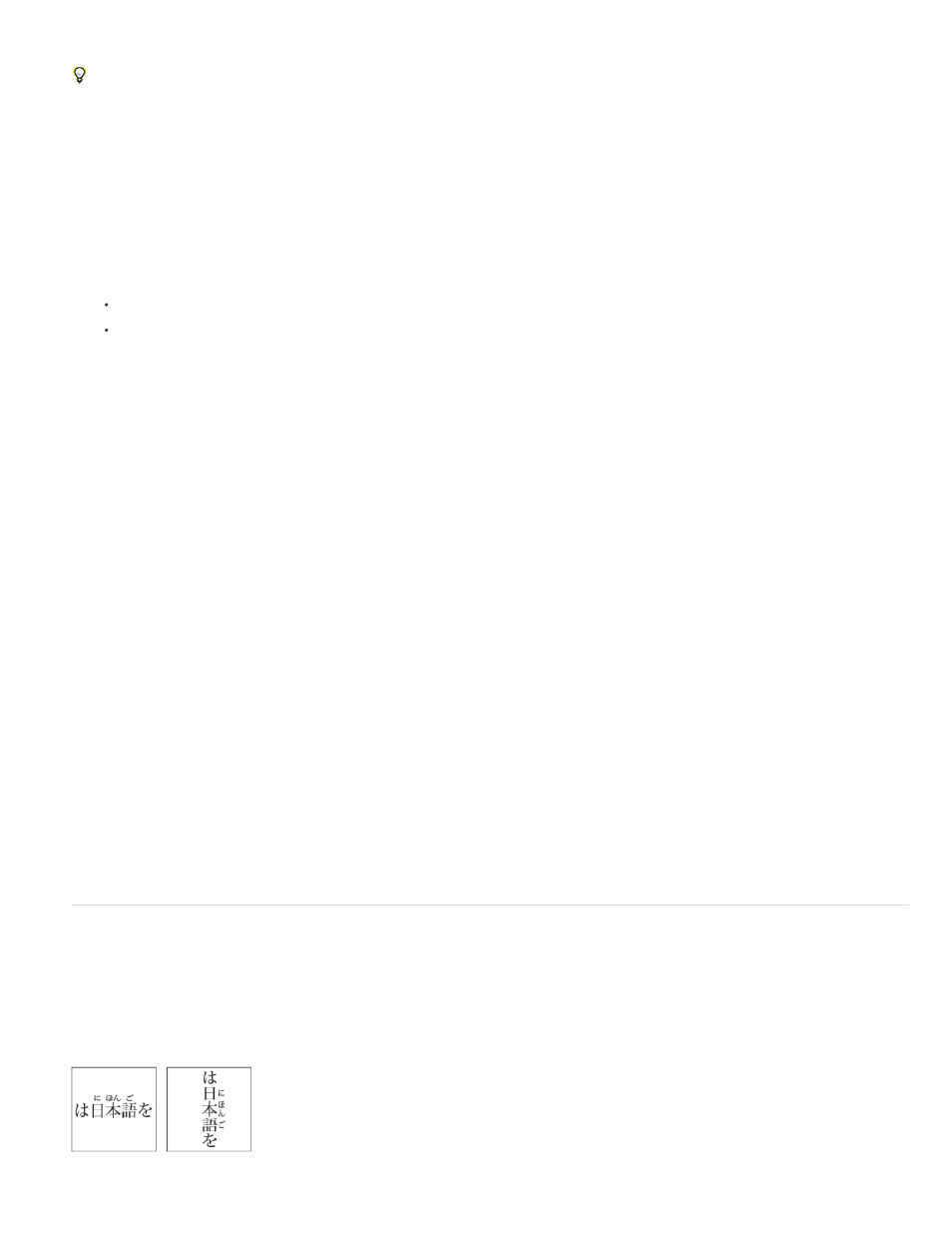Add ruby to text – Adobe InDesign User Manual
Page 471

dialog box, and click OK.
If multiple instances of tate-chu-yoko appear next to each other, use the Non-joiner character to keep them separate. Choose Type > Insert
Special Character > Other > Non-joiner.
Remove tate-chu-yoko
1. Select the text to which you want to apply tate-chu-yoko.
2. Do one of the following:
Choose and cancel Tate-chu-yoko from the Character panel menu or Control panel menu.
Choose Tate-chu-yoko Settings from the Character panel menu, deselect Tate-chu-yoko in the Tate-chu-yoko dialog box, and then
click OK.
Change tate-chu-yoko settings
1. Choose Tate-chu-yoko Settings from the Character panel menu.
2. Specify a value for moving the text up or down in X Offset. If you specify a plus value, the text will move up, and if you specify a minus
value, it will move down.
3. Specify a value for moving the text left or right in Y Offset. If you specify a plus value, the text will move to the right, and if you specify a
minus value, it will move to the left.
Set Auto Tate-chu-yoko for specific paragraphs
1. Select the text to be set to Auto Tate-chu-yoko, or place the text insertion point in the paragraph.
2. Choose Auto Tate-chu-yoko from the Paragraph panel menu.
3. In KumiNumber, specify the number of successive half-width characters that you want to rotate to vertical orientation. For example, if this is
set to 2, the character string "123" will not rotate, while "12" will.
4. If you want to apply tate-chu-yoko to roman text, select Include Roman Characters, and click OK.
Add Ruby to text
In Japanese, Ruby (also known as furigana) is normally used to show the kanji yomi in hiragana. In Simplified Chinese, Ruby is called Pinyin,
while in Traditional Chinese, Ruby is called Chuyin. InDesign provides full support to Japanese Ruby and limited support to Chinese Pinyin or
Chuyin. You can adjust Ruby settings to specify Ruby location, size, or color. Furthermore, when the ruby is longer than the parent you can specify
the ruby distribution. You can also apply tate-chu-yoko to Ruby.
466
